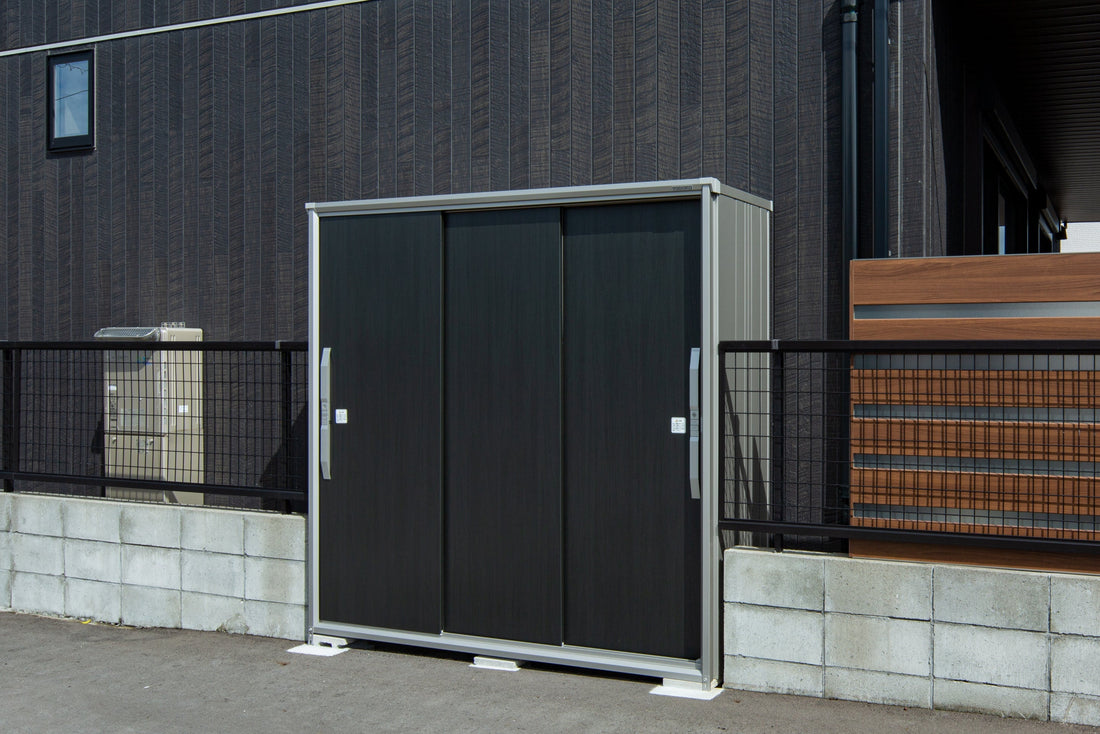
10 Outdoor Storage Mistakes You Might Be Making
Share
Outdoor storage can be a game-changer for your patio, backyard, or side yard—but only if done right. From rusty tools to cluttered corners, small oversights can lead to costly damage, wasted space, or daily frustration.
Here are 10 common outdoor storage mistakes you might be making—and exactly how to avoid them. Whether you're organizing a small balcony or a spacious garden shed, these tips will help you create a cleaner, more secure, and weather-resilient setup.
1. Using the Wrong Material for Your Climate
Mistake: Choosing wood or plastic cabinets that warp, rot, or fade when exposed to rain, sun, or snow.
Why it's a problem: Moisture seeps into wood fibers and expands plastic shells, leading to cracking, mold, and discoloration.
Solution: Choose galvanized steel or powder-coated metal designed to resist UV rays, heavy rain, high humidity, and temperature swings without cracking, swelling, or warping. These materials offer long-term durability and a sleek, modern finish.
2. Placing Storage Directly on Dirt or Grass
Mistake: Putting your cabinet directly on the ground without a base.
Why it's a problem: Ground moisture and puddles collect under cabinets, leading to rust, mildew, and soft footing. Also, pests like ants and rodents can burrow up from below.
Solution: Elevate the cabinet using integrated legs, paver blocks, or a solid foundation like concrete or decking. This allows airflow underneath and prevents corrosion.
3. Overlooking Water Sealing and Ventilation
Mistake: Using storage that traps humidity but doesn’t seal out rain.
Why it's a problem: Without ventilation, cabinets become musty and moist. Without seals, water gets in during storms.
Solution: Choose cabinets with sealed doors, gaskets, and ventilation slits or back vents. These features protect contents from external weather and internal condensation.
4. Buying Too Small (or Too Big)
Mistake: Underestimating how much storage you actually need—or buying a huge shed that overwhelms your space.
Why it's a problem: Small units overflow quickly and become disorganized. Oversized cabinets waste space and reduce mobility.
Solution: Use modular systems that let you start small and expand over time. Many units offer stackable or side-by-side options for growth.
5. Ignoring Security Features
Mistake: Leaving your gear in a cabinet with weak hinges, no lock, or flimsy construction.
Why it's a problem: Tools, sports gear, and garden equipment can be costly. An unsecured cabinet is an easy target.
Solution: Choose storage with recessed locking systems, tamper-resistant doors, and anchor-ready frames. For added security, place cabinets near motion-sensor lights or cameras.
6. Forgetting UV Protection
Mistake: Assuming all outdoor cabinets are sun-resistant.
Why it's a problem: UV rays degrade many surfaces, causing fading, brittleness, and warping.
Solution: Opt for UV-treated finishes and color coatings that hold up under long-term sun exposure. This is especially important in open patios or desert climates.

7. Skipping Maintenance-Free Options
Mistake: Choosing materials like wood that need frequent repainting, staining, or sealing.
Why it's a problem: Outdoor furniture and cabinets should reduce your work, not add to it.
Solution: Use powder-coated metal or steel with rust-resistant finishes that require little more than occasional wiping to stay clean and sharp.
8. Poor Interior Organization
Mistake: Tossing everything inside without planning for structure.
Why it's a problem: Cluttered cabinets make it harder to find tools, waste space, and lead to damage.
Solution: Use systems with adjustable shelves, hanging hooks, pegboards, or bins to keep items sorted by type and frequency of use.

9. Underestimating Wind and Weather
Mistake: Thinking your storage will be fine through storms without extra support.
Why it's a problem: Lightweight cabinets can tip or fly open. Doors may warp or bend.
Solution: Choose heavy-duty frames with sealable doors. Bolt them to a base or anchor them into concrete to withstand strong winds and prevent tipping.
10. Ignoring Aesthetics
Mistake: Treating storage as purely functional.
Why it's a problem: A bulky or mismatched cabinet can ruin the look of a well-designed yard or patio.
Solution: Pick cabinets with sleek lines, neutral colors (like matte black, gray, or beige), and smooth finishes that blend with modern outdoor decor. Look for options that complement existing fencing, decking, or architecture.
Final Thoughts
Avoiding these common mistakes doesn’t just improve how your storage looks—it ensures your tools last longer, your yard stays neater, and your weekends stay free from preventable repairs. With the right materials, design, and placement, your outdoor cabinet can be one of the most functional and worry-free features of your home.

